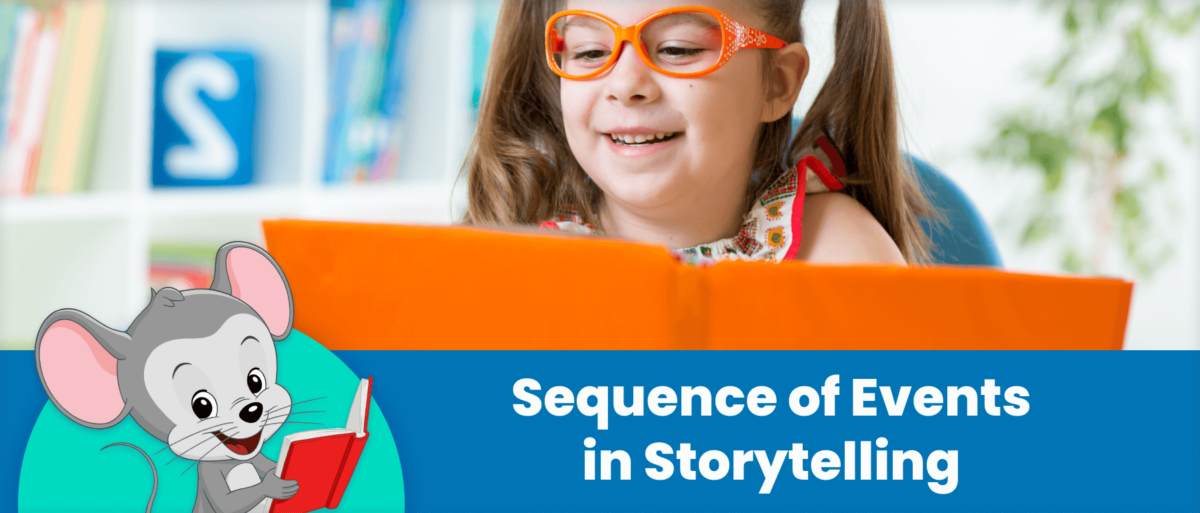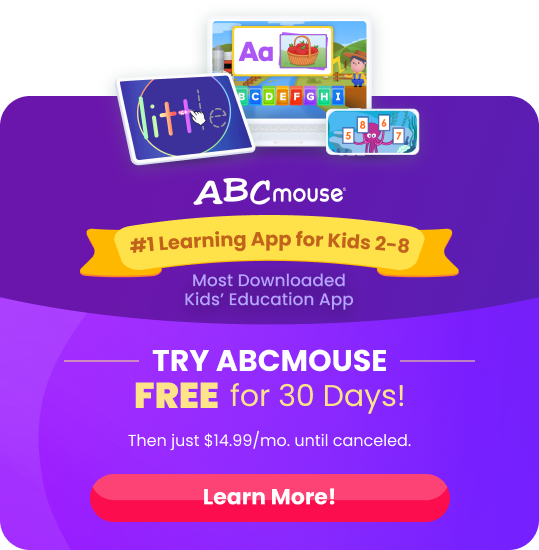
Teaching Children Sequence of Events in Storytelling
Discover how to enhance student’s reading comprehension skills using story sequencing as an effective teaching tool.
Teaching kids to read involves more than just learning to sound out words. They also need to learn reading comprehension skills to help them understand texts on a variety of levels. One of the most basic of these skills is known as story sequencing, or the ability to recount the sequence of events in a narrative. Here’s how to teach this concept to your child.
What does “sequence of events” mean in storytelling?
At its most basic level, being able to recall the sequence of events in a story means the ability to describe major plot points and put them in the correct order. This can be as simple as beginning-middle-end: “First, the characters did this. Then, this thing happened. Finally, they all learned this.”
As students get older, they learn more details about story sequencing, which is often called a “narrative arc” or “plot arc.” This arc includes:
- Exposition: Introduction to characters and background information
- Inciting Incident: A specific event that sets the story in motion
- Rising Action: Development of characters and plot, adding complications and conflicts
- Climax: The turning point of the story, where the main conflict reaches its peak
- Falling Action: Events after the climax, showing the results of character actions
- Resolution: The final outcome of the conflicts and complications, with loose ends tied up
- Conclusion: Summary of current character states, hints at the future, provides closure for the reader
Successful stories use this sequence of events to draw the reader in and create a sense of tension and excitement, keeping readers engaged throughout the text.
The Value of Teaching Story Sequencing
Being able to consider and recall the sequence of events in a narrative is a basic logic skill, one that benefits kids in reading and beyond. They’ll need to be able to recall the sequence of events in history, in a science experiment, even in solving math problems.

Story sequencing also supports critical thinking, such as identifying cause and effect or learning problem-solving skills. It’s a vital part of creative writing, helping guide students through creating their own compelling narratives. And it’s incredibly helpful as students get older and begin reading and analyzing more complex literary texts.
How to Teach Sequence of Events
Story sequencing is one of the earliest skills you can teach your child, since they don’t need to be able to read on their own to understand it. Anytime you read together, you can help emphasize the sequence of events with some simple questions and discussion.
Tip: When choosing books for practicing story sequencing, be sure to choose those that have a strong narrative arc. For example, a book like Goodnight Moon doesn’t really tell a story, so it’s not ideal for retelling a sequence of events. Better choices: Where the Wild Things Are or Stellaluna. You’ll also find a big selection of animated fables and beginning reader videos here on our YouTube page.
By age two or three, kids should be able to name the major story events and put them in the correct order. In the early elementary years, kids can use story mapping to begin identifying an overall story arc (along with other important details). Try these activities with your child to learn age-appropriate sequence of events skills.
Sequence of Events Activities for Preschoolers
Learn the Words
Start by learning about sequencing in general with your toddler. Use words like “beginning, middle, end” and “first, then, finally” to describe all sorts of activities. For example, when you’re brushing your teeth: “First, we put toothpaste on the brush. Then, we brush each tooth. Finally, we spit out the toothpaste and rinse off the brush.”
Identify Beginning, Middle, End in Read Alouds
After you and your child enjoy a story together, ask them to tell you what happened at the beginning and the end. Then, ask them to fill in events in the middle. Ask questions like “Did Goldilocks eat the porridge first? What did Goldilocks do next?”
Once Upon a Time
Show your child how to look for cues about the beginning and end of stories using fairy tales. When they hear “Once upon a time,” they know they’re at the beginning. “Happily ever after” signals the end. Ask them to think about what happens right after or before those phrases to identify the beginning and ending events of a story.
Exciting Events
This is another phrase you can use with preschoolers to help them identify and sequence important events in a story. After you read, ask them to help you make a list of exciting things that happened, writing each on a notecard or sticky note. Then, work together to put those events in the right order.
Story Sequencing Activities for Elementary Students
Teach Me How To
Ask your child to teach you how to do a task that has an ordered series of steps (even if you already know how to do it). Examples: make a sandwich, get dressed for school, or brush your teeth. Write each step of their directions on a different notecard. Take the cards and mix them up, then try to follow them in the new order. After you’re all done laughing, ask them to put the cards into the correct order again.
Storyboard It
A storyboard is kind of like a comic strip without words. It lays out the action of a story in pictures. Choose a story with a strong narrative arc, and provide your child with a blank storyboard. (This usually looks like a strip of blank squares in a row.) Have them choose important parts of the story, including the beginning and the end, and draw pictures to illustrate each one in order.
Story Chains
Cut strips of paper, the sort you’d use to make a paper chain. On each one, write an event that happens in the story you’ve just read. Mix them up, then work to put them in order and create a paper chain that retells the story in the proper sequence.
Character Retell
When you retell a story from a different character’s point of view, it might change your view of the events, but the overall sequencing of the events remains the same. That makes this a perfect activity for practicing sequencing, while also considering point of view and characterization.
Ride the Story Coaster
We often encourage kids to think of the sequence of a narrative arc like a roller coaster. The beginning is low and level, then the rising action is like the first big hill. At the top of the hill, the characters experience the climax, followed by the falling action and conclusion. Sketch a simple roller coaster, then use it as a timeline and have your child fill in the various events that happen along the way.
ABCmouse Games
ABCmouse reading comprehension games are a fun, interactive way to learn sequencing. Try these favorites:
Learn how ABCmouse can help your preschool child be better prepared for kindergarten here, then join today to get started on a lifetime of learning!


